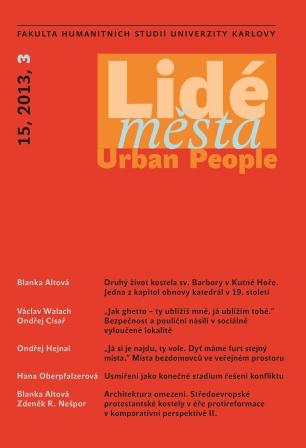Architektura omezení Středoevropské protestantské kostely v éře protireformace v komparativní perspektivě II .
Architecture of Restriction. Central-European Protestant Churches in a Comparative Perspective II .
Author(s): Blanka Altová, Zdeněk R. NešporSubject(s): History
Published by: Univerzita Karlova v Praze - Fakulta humanitních studií
Keywords: Silesia; Hungary; Czech lands; protestant architecture; history of architecture; counter-reformation
Summary/Abstract: This second part of the comparative study of Protestant churches constructed during the Habsburg Dynasty in the era of the Counter- Reformation discusses the six Silesian “Churches of Grace”, as well as the several hundred “Toleration Churches” in the Czech Lands, in Moravia, in Austrian Silesia and in the Kingdom of Hungary (the first part of the study was published in volume 15, 2013, 1). From the perspective of art history, the “Churches of Grace” are described individually, whereas in the case of the “Toleration Churches”, the description is mainly refrained to the Czech Lands and to the universal traits of such constructions, documented through specific examples. The authors show that local conditions and the possibilities of local congregations played a greater role in the design, the construction and the furnishing of individual churches than the external religious legislative restrictions. The significant influence of these external restrictions on the architecture of Evangelical churches in the Habsburg lands wasn’t felt until the period of religious tolerance at the end of the 18th and in the first half of the 19th centuries. More important than the religious restrictions themselves (typically expressed in the location of the construction and in the prohibition of building towers), which were taken hard by the Evangelicals, was the obligation to use the so-called national style and the required types of construction styles and norms, which defined the character and size of all public buildings. This fact has been practically ignored in all literature to date. Such requirements, along with other conditions simultaneously prevented a more significant use of earlier or foreign architectural styles, except for the Evangelical church architecture of Austrian Silesia, to some extent.
Journal: Lidé města
- Issue Year: 15/2013
- Issue No: 3
- Page Range: 469-509
- Page Count: 41
- Language: Czech

